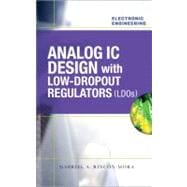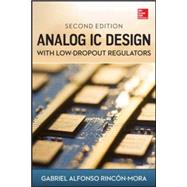Analog IC Design with Low-Dropout Regulators (LDOs)

Analog IC Design with Low-Dropout Regulators (LDOs)
- ISBN 13:
9780071608930
- ISBN 10:
0071608931
- Format: Hardcover
- Copyright: 01/23/2009
- Publisher: McGraw-Hill Professional
- Newer Edition
Rent
Sorry, this item is currently unavailable on Knetbooks.com
Note: Supplemental materials are not guaranteed with Rental or Used book purchases.
Extend or Purchase Your Rental at Any Time
Need to keep your rental past your due date? At any time before your due date you can extend or purchase your rental through your account.
Summary
Master Analog Integrated-Circuit DesignDesign, analyze, and build linear low-dropout (LDO) regulator ICs in bipolar, CMOS, and biCMOS semiconductor process technologies. This authoritative guide offers a unique emphasis on embedded LDO design. Through intuitive explanations and detailed illustrations, the book shows how you can put these theories to work creating analog ICs for the latest portable, battery-powered devices.Analog IC Design with Low-Dropout Regulators details the entire product development cycle-from defining objectives and selecting components to blueprinting, assembling, and fine-tuning performance. Work with semiconductors, employ negative feedback, handle fluctuating loads, and embed regulators in ICs. You will also learn how to build prototypes, perform tests, and integrate system-on-chip (SoC) functionality. Discover how to: Design, test, and assemble BJT-, MOSFET-, and JFET-based linear regulators Use current mirrors, buffers, amplifiers, and differential pairs Integrate feedback loops, negative feedback, and control limits Maintain an independent, stable, noise-free, and predictable output voltage Compensate for low input current and wide voltage swings Optimize accuracy, efficiency, battery life, and integrity Implement overcurrent protection and thermal-shutdown features Establish power and operating limits using characterization techniques









